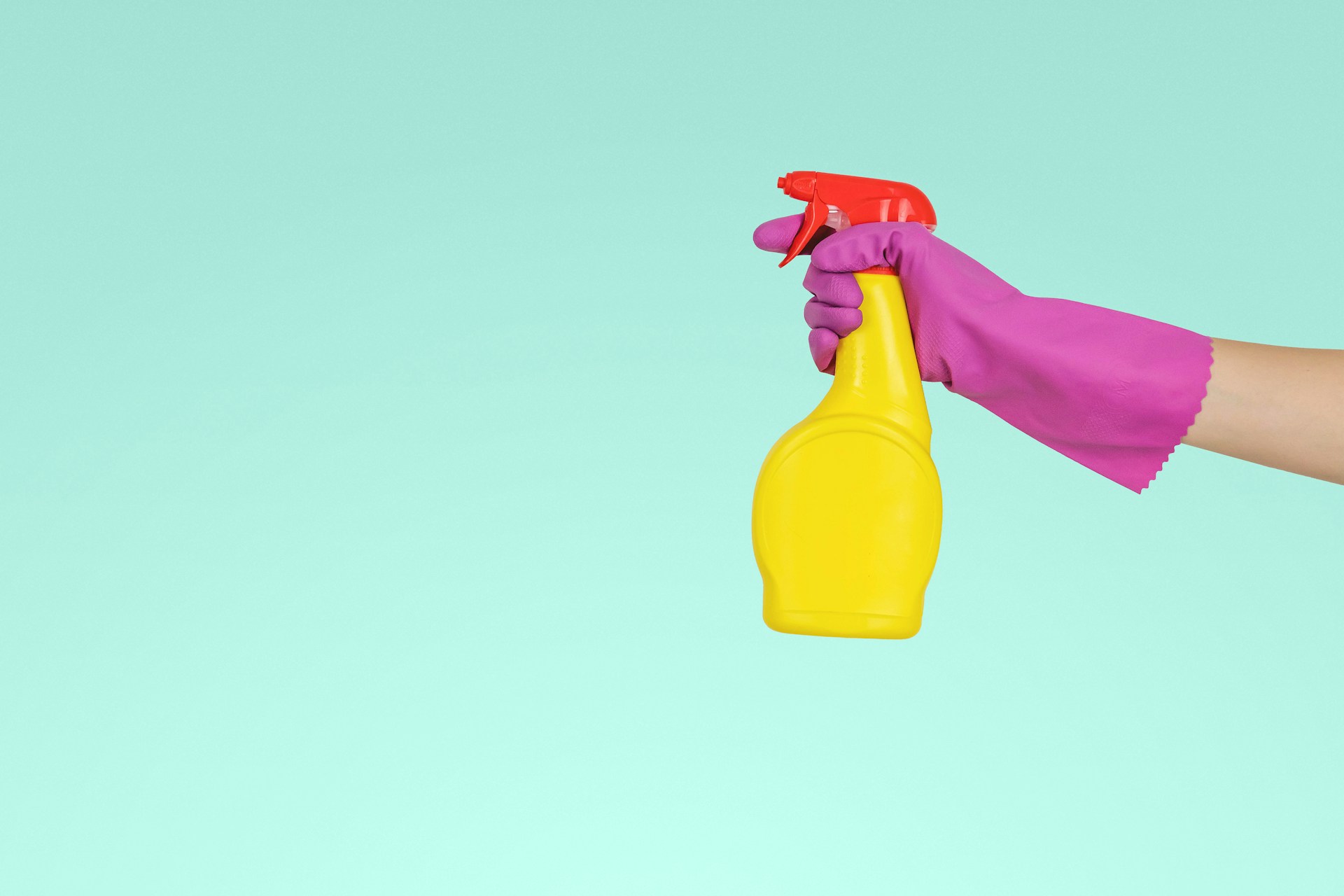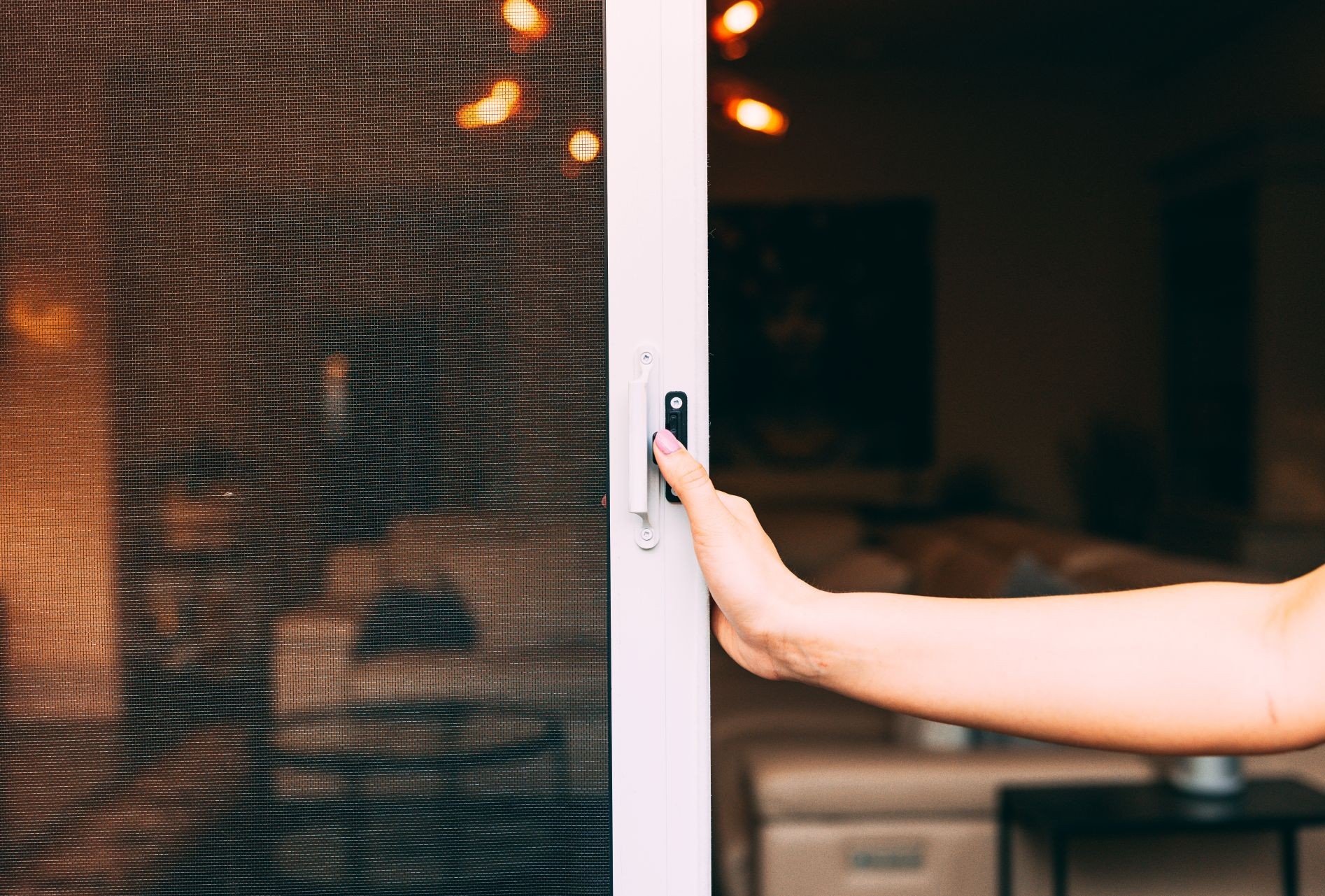
Window Cleaning
What Does Mold Smell Like? Here's What You Need to Know!
Why does your home smell... off?
Maybe it's that musty scent lingering in your basement. Or maybe it's a damp, sour smell near the windows after a storm, almost like wet laundry you forgot about or those old books in a musty attic. If you've ever caught a whiff of that strange, stale smell, there's a good chance mold is to blame.
Even if you can't see any mold growth, your nose knows better. But what does mold smell like? Why does it have such a distinctive odor in the first place? And how can you distinguish mold odors from other smells in your home?
In this article, we'll explain what causes mold's unmistakable smell, why it matters for your health and home, and how to distinguish it from other unpleasant smells.
Key Takeaways
- The smell of mold comes from airborne chemicals called MVOCs. These microbial volatile organic compounds are released as mold breaks down materials like wood, paper, or fabric. The result is a musty, earthy, sour, or rotting smell that often signals hidden moisture or growing mold colonies.
- Moldy smells are more than a nuisance because they can affect your health. Prolonged exposure to mold odors can trigger allergic reactions, respiratory issues, and irritation, especially in sensitive individuals or those with preexisting conditions.
- Old windows and doors are mold magnets, but Magic products help prevent it. Magic windows and glass doors feature airtight seals, condensation-resistant glazing, mold-resistant frames, and superior ventilation. All of these can help reduce moisture buildup and eliminate the conditions mold needs to thrive.
Why Does Mold Have a Distinctive Smell?

Mold has a distinctive smell because of something called microbial volatile organic compounds (MVOCs), which are produced and released as part of the mold's growth and metabolic processes. As mold breaks down organic material, these compounds become airborne and cause the distinctive smell we now associate with mold. According to Kozicki et al., among the MVOCs produced by some mold species are:
- Alcohols
- Aldehydes
- Ketones
- Carboxylic acids
Other compounds may contain sulfur or nitrogen, which is why some mold species produce odors similar to rotten eggs or ammonia.
It's important to note that sensitivity to mold odors varies. Some people can smell even low levels of mVOCs, while others may not notice anything until mold growth becomes severe.
What Does Mold Smell Like?
The exact smell caused by mold growth differs based on the type of mold, the material it's growing on, its growth stage, and even environmental conditions. But, in general, people associate mold with the following smells:
- Musty. This smell is typically described as resembling damp or decaying organic materials, such as wet laundry left sitting for too long, a pair of wet socks, or a pile of rotten wood. The musty odor is a telltale sign that there are moisture issues in the area, which can lead to mold infestation if not addressed promptly.
- Earthy. Some molds emit an earthy smell similar to rotting wood or decaying leaves.
- Stale. A stale smell is reminiscent of air that hasn't circulated, like a closed-off room, old books, or stagnant spaces. This scent is often described as flat, lifeless, or reminiscent of dust and old cloth.
- Damp. The damp smell is similar to wet fabric, basement air, or a wet cellar. It is a clear sign of excess humidity or persistent moisture. This odor feels "humid" to the nose and is commonly associated with areas where water intrusion or leaks have occurred.
- Sour. A sour or tangy smell is sharp and acrid, often compared to soured milk, fermenting alcohol, or even vinegar.
- Rotting or fermenting. The scent of rotting or fermenting mold is unmistakable. It resembles spoiled fruit, compost, or decaying food.
- Decaying wood. The decaying wood odor is a blend of earthy musk and sweet rot, much like an old forest log or mulch pile after rain. This specific smell is common in basements, attics, or crawl spaces where wood has been exposed to moisture for a prolonged period.
What Smells Can be Mistaken for Mold?
Although mold does have quite a distinctive smell, several other mold-like smells can easily be confused with it. Among these false positives are:
- Pet odors: urine from pets, especially in carpets or corners, can create ammonia-like or musty smells similar to mold.
- Dirty HVAC systems: Dust and bacteria buildup in air ducts or on filters can emit a musty or stale smell when the system runs.
- Stale water or damp laundry: wet towels left in a pile or forgotten laundry in a washer can emit odors nearly identical to mold.
- Old books and papers: paper products absorb moisture easily, and when they do, they give off a musty smell, often mistaken for mold.
- Cigarette smoke residue: third-hand smoke clinging to walls and fabric may create a persistent, musty smell similar to that of mold.
- Plumbing leaks or drain smells: a slow leak or stagnant water in drains can produce musty or mildew-like odors even when no mold is present.
- Certain foods or spices: some strong-smelling foods (like blue cheese or fermented goods) can smell moldy but are not hazardous in the same way.
If you're unsure whether you're smelling mold or something else, look for other signs, like visible growth, water stains, or high humidity.
Health Risks Associated with Mold Smells
Mold doesn't just produce a pungent odor; it can also pose significant health risks. If someone inhales MVOCs for a longer period, they can develop symptoms like:
- Coughing
- Wheezing
- Skin rash
- Runny nose
- Respiratory issues
- Sore throat
Besides allergic reactions, mold exposure can pose a significant risk to people with a compromised immune system, asthma, or chronic lung disease, who may have difficulty breathing in moldy environments, for example.
If you develop any of the common symptoms associated with mold or severe reactions to mold exposure, you should seek medical attention. A medical professional can assess if you need treatment.
Detecting Mold in Your Home
Given that mold can pose serious health risks over time and can even damage your house, it's extremely important to detect it sooner rather than later. Therefore, if you notice a funny smell that is not common in your house, it's time to schedule a thorough inspection.
You can initially do it yourself. If you can't find anything of importance but the smell of mold is still present, you should seek professional mold remediation services for mold removal and moisture control.
Here's what you should do to detect mold early:
- Measure indoor humidity levels over the course of 3-4 days. If they're constantly above 60%, if there's a musty smell, and if you live in a humid climate, there's definitely some mold growth in your house.
- Check the moist environments in your house first, as mold thrives in high-humidity spaces: the basement, bathroom, or kitchen. Inspect the walls and all the hidden places (behind furniture or under carpeting, for example) to check for visible mold.
- You'll know it's mold when you see it: mold typically grows in fuzzy or slimy patches; it can be black, gray, green, brown, white, or other colors (there are over 100,000 different types of molds, so you won't be able to know for sure which one it is). If it's black, don't panic. Not all black mold is the notorious toxic black mold, but you should not rule out this possibility.
Can't See Any Mold?
If you can't see any mold growth but still notice that moldy odor, the mold may be growing inside the walls, especially if you've recently had moisture problems, such as floods or leaks. What does mold smell like in walls? Basically, the same as if it were growing on the walls: musty and earthy.
Furthermore, if you notice peeling paint or wallpaper, this can also be an indicator that there's hidden mold growing in wall cavities.
Either way, if you cannot visually identify any mold growth, you should seek professional remediation services. The experts will conduct a thorough mold inspection to check for any hidden issues. They also offer mold testing and moisture mapping services.
How to Get Rid of Mold

If you've noticed some mold growth (and it's not growing on an extensive area!), you can try dealing with it yourself. Nonetheless, it is generally recommended to seek proper remediation services provided by professionals to avoid putting yourself at risk of inhaling mold spores.
Furthermore, it's important to remove it as soon as possible; otherwise, it will continue growing, the smell will get worse, and the remediation process will become more difficult. As such, here's what you can do before you seek professional help:
- Use natural solutions like those made with white vinegar to remove the mold. You can also use commercial fungicides, but make sure to follow manufacturer's instructions.
- Use a dehumidifier to maintain humidity levels below 50% and improve ventilation in the room. Even if the solution doesn't fully remove the mold, maintaining low humidity levels and properly ventilating the room will make the environment unfavorable for mold growth.
- Use an air purifier with HEPA filters to trap mold spores, reduce odors, and improve air quality.
- Prevent future mold growth by fixing any water leaks and dry water-damaged areas within 24-48 hours and keeping your house clean (mold can even feed on dust!).
- Make sure to protect yourself against mold spore inhalation: wear a mask and protective clothing, keep the air conditioning on or your windows open for ventilation, and do not mix any solutions.
- Avoid using air fresheners to cover up the unpleasant house smell produced by mold, as this won't solve the problem.
If mold has grown on a large area or if you can't see it, seek professional help. Additionally, if you have removed the mold but it keeps coming back no matter what, there may be a hidden leak you're not aware of. An expert can identify it promptly.
If you’re renting and suspect mold due to a persistent musty odor, document the issue and notify your landlord. In many places, landlords are legally required to address mold-related health effects.
How Magic Products Help Prevent Mold and Unpleasant Odors
Old windows and glass doors are often the first to suffer from mold growth. Why? Because they're poorly insulated. Every time it rains or snows, moisture seeps in through tiny cracks within the frame or around it. Condensation forms and mold grows slowly on windowsills, around the frames, and on the surrounding walls.
Therefore, if your windows and glass doors are old and there's mold in your house, replacing them should be a priority. And that's exactly what Magic can help you with! Read on to learn why.
1. Improved Insulation and Airtight Seals
Magic windows and glass doors are engineered with high-performance insulation and airtight sealing. This helps eliminate drafts and prevents outside humidity from entering your home, especially in areas where temperature fluctuations normally cause condensation to form on glass surfaces.
Furthermore, our Insulated Glass Units have more inert gas than other windows on the market. We've made this possible by extending the space between the two glass panes. And this means that our units serve as a better insulating barrier.
2. Condensation Control
Thanks to advanced materials and double or triple glazing, Magic windows and glass doors experience little to no condensation on the interior glass surface. Less condensation means fewer opportunities for moisture to collect on frames, drywall, or sills: key areas where mold likes to hide and grow.
3. Better Ventilation

Magic windows and glass doors are designed with functionality in mind: they're incredibly easy to open and close and provide superior ventilation, especially since the bug screens are not fixed (as you probably already know, fixed bug screens negatively affect ventilation). When you need to properly ventilate the room, you can hide the bug screen within the cartridge that is attached to the window frame.
4. Durable, Mold-Resistant Materials
Unlike older wooden frames that can rot or absorb moisture, Magic windows and doors feature our Hybrid Fusion Frame, which is a combination of vinyl, aluminum, and steel. Therefore, it is highly unlikely that mold will grow on our window frames. Plus, given that they are incredibly sturdy, our frames are also slimmer, which means they also maximize natural light.
5. Energy Efficiency = Humidity Stability
Better energy efficiency means your home stays at a more stable indoor temperature. This minimizes surface temperature differences that normally cause condensation, especially in colder months. And Magic windows and doors certainly excel at energy efficiency (spoiler alert: many of our units actually exceed ENERGY STAR requirements!).
Final Thoughts
Mold has a wide range of distinctive smells: musty, earthy, sour, or damp. All of them signal one thing: your house is too humid, and mold is probably thriving in it.
While it’s easy to dismiss these odors as harmless or temporary, they are often caused by more serious problems like hidden leaks, poor ventilation, or condensation around windows and doors. Over time, these will cause other issues, including structural damage and health problems.
If you’ve noticed any of these smells near old windows or glass doors, it might be time for an upgrade. Magic’s innovative windows and doors are designed to reduce condensation, improve airflow, and block out excess humidity, all of which help prevent mold before it starts (and before it starts to smell).
So, do you want to protect your home and breathe cleaner air?
Contact Magic today to learn how our cutting-edge windows and doors can help eliminate the conditions that allow mold and its telltale odor to thrive!
Frequently Asked Questions
How do I know if I'm smelling mold?
You'll know that you're smelling mold if you notice a persistent musty, earthy, or damp odor, especially in areas with poor ventilation or past water damage. The smell often resembles wet socks, rotting wood, or old paper. If the odor lingers even after cleaning the house, it's worth investigating for hidden mold growth.
What does black mold in a house smell like?
Black mold typically has a strong musty or earthy odor, similar to rotting leaves or wet soil. Some people also report a sharp, sour smell. The intensity may vary depending on how much mold is present and where it's growing. However, keep in mind that not all mold that has a black color is the toxic black mold. Many mold species have a black color.
Is it unsafe to smell mold?
It is unsafe to smell mold. While the smell itself isn't toxic, the airborne compounds released by mold can cause health issues. Prolonged exposure may lead to respiratory symptoms, headaches, or allergic reactions.
What are signs of mold sickness?
Common signs of mold sickness include coughing, sneezing, nasal congestion, sore throat, skin rashes, and eye irritation. In more severe cases, it can trigger asthma attacks or lead to fatigue and difficulty breathing.
How can I detect mold in my home?
To detect mold in your home, look for musty odors, visible growth, and moisture problems in areas like basements and bathrooms. If you're unsure, it might be a good idea to hire a professional mold inspector to solve your house's mold problem.